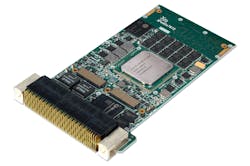Embedded Board Standards Are No Longer “Standard” – So Why Aren’t You Looking for Better Alternatives?
Embedded Board Standards Are No Longer “Standard” – So Why Aren’t You Looking for Better Alternatives?
That “standard” you’re buying has some issues, and it carries a lot of extra baggage. For new designs, it’s time to look at more up-to-date, modular alternatives.
By most engineers’ definition of a board standard, a customer should be able to remove a CPU board from a box and replace it with another CPU board—regardless of the manufacturer—and have it come up and running with fairly minimal effort.
Unlike the old VMEbus days, today's standards committees are driven by special interest groups, where everyone has his or her own ideas.
That's certainly the case with the PC standard. If a graphics card or an Ethernet card fails in a PC, you buy another one and plug it in. The average user can handle the configuration in a matter of minutes. Similarly, the percentage of USB-based peripherals that work right the first time with minimal user intervention is incredibly high. So clearly, if you want to make the effort, it's possible to have a working standard.
Just as clearly, that's not the case with embedded board standards.
VITA is the organization driving technology and standards for the bus and board industry.
No Interchangeability With Embedded “Standards”
Let’s look at VPX, one of the most common “standards” implemented in military embedded systems. There must be at least 18 different VPX backplane standards. Each manufacturer puts its PCI Express (PCIe) lanes on a different configuration, mixing up the I/O on the pins. To implement that one-for-one swap, you have to find a manufacturer that employs the exact same pin-out. Good luck with that search.
There's no interchangeability, so why have a standard? You still have to purchase all your hardware from one supplier and design the backplane in your ATR box to accommodate that supplier's implementation of "the standard." VPX was initially intended to be a standard that provides modularity, but I don't see any modularity there.
Unlike the old VMEbus days, today's standards committees are driven by special interest groups, where everyone has his or her own ideas. Back in the days of the original VMEbus specification, we held plug-fests, where one manufacturer would bring a chassis and another brought a processor card, and so on. And we'd make sure all these products worked together. That simply doesn't happen anymore.
So if standards are no longer “standard,” what are your options?
Modular Systems Meet The Promise Of Rugged Embedded Standards
GMS has developed a series of small form-factor products that are about one-fourth the size of an ATR box, yet provide a lot more I/O and functionality. By having all the functionality integrated, we eliminate the cost of the interconnect and the wedge locks. And how often does somebody open an ATR box to replace a failed VPX card? Rarely, at best. They send the whole box back. Oh yes, and our products also send all the heat where it belongs, which is into the chassis.
The most prevalent argument against modular architectures is that they’re not a standard. As we’ve already discussed, neither is VPX. COM Express falls into the same category. There's hardly anything that's interchangeable between suppliers. The same holds true for PC/104.
So while it’s true that the GMS modular architecture is proprietary and can't be interchanged with other manufacturers' products, it’s time for embedded systems designers to face reality. That “standard” you’re buying has the same issues, and it carries a lot of extra baggage. For new designs, it’s time to look at more up-to-date, modular alternatives.
About the Author


